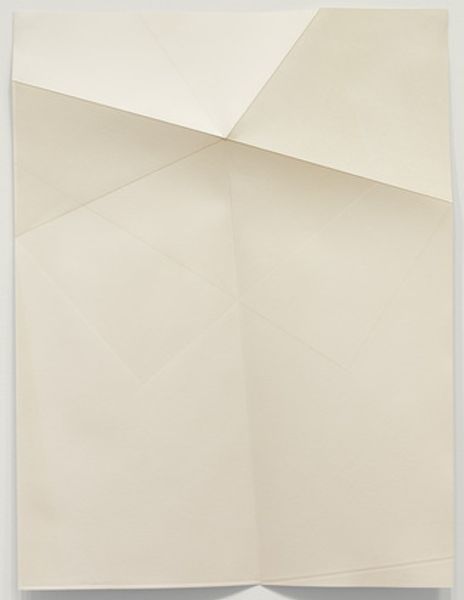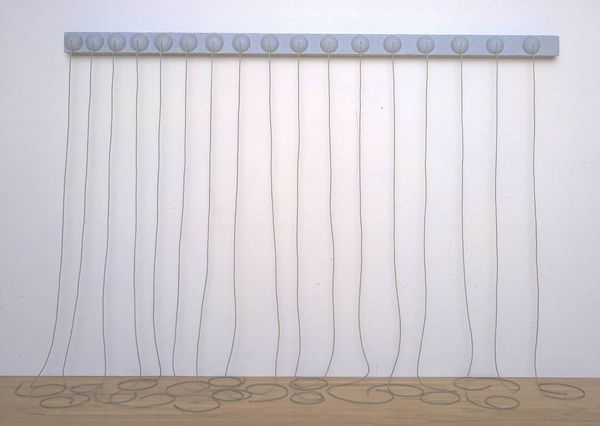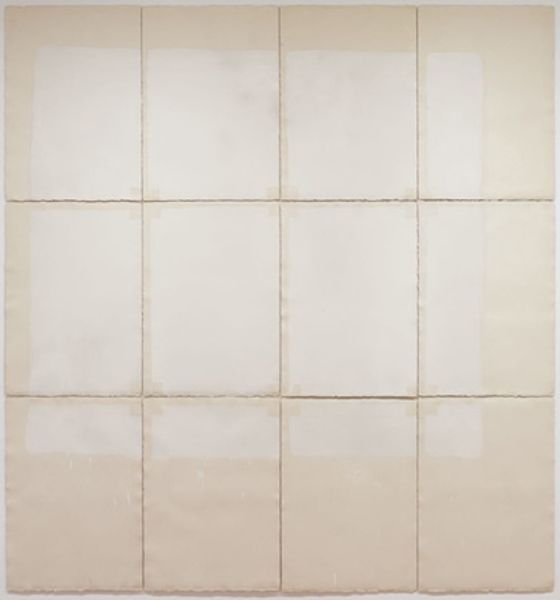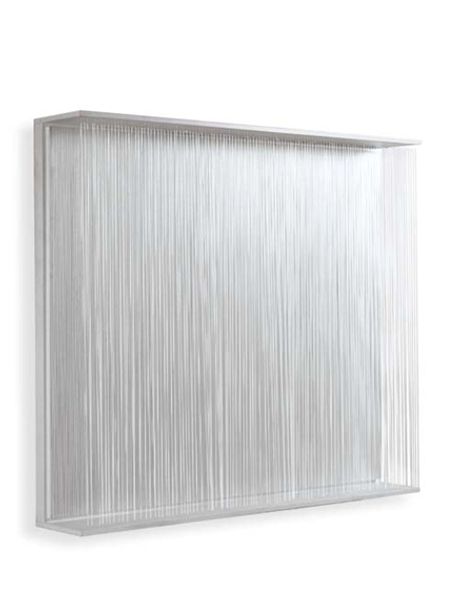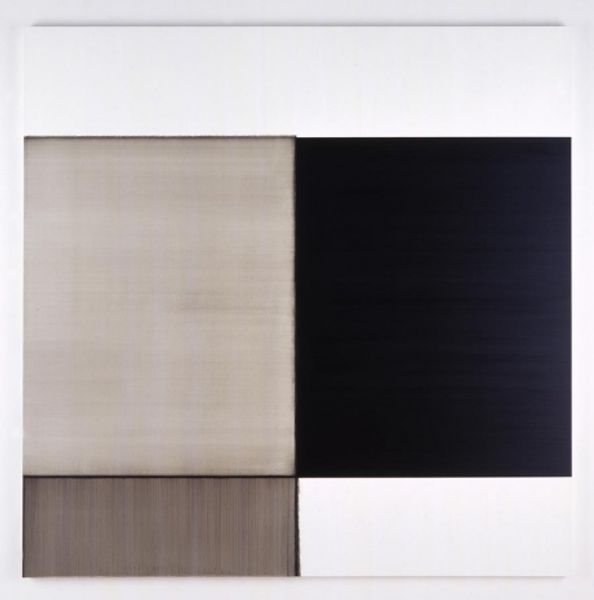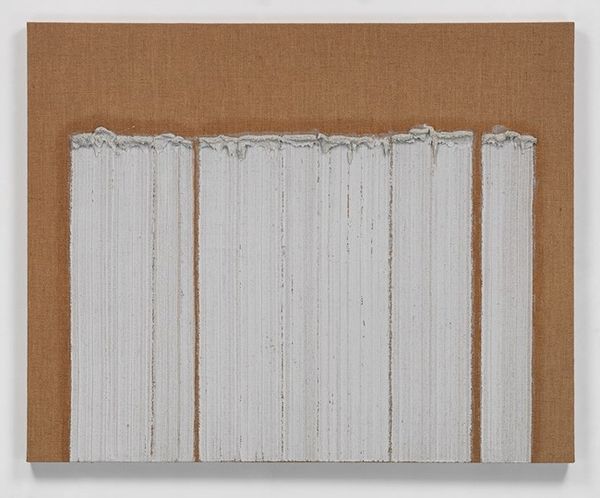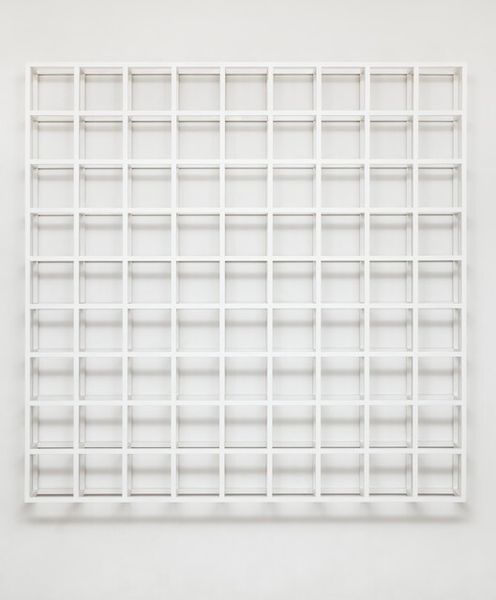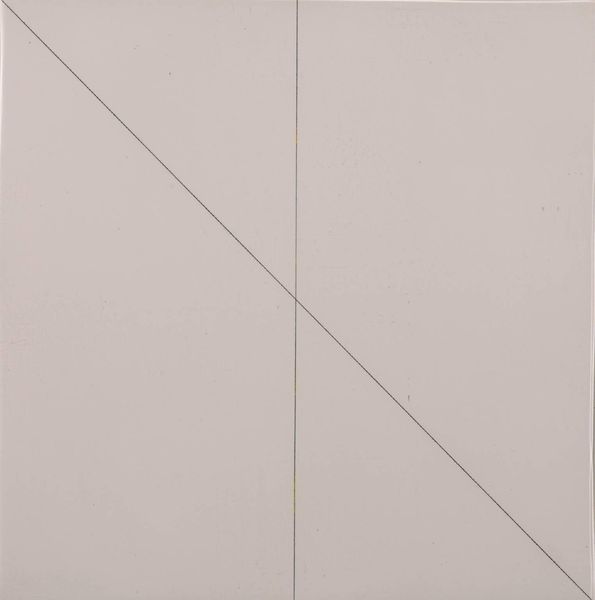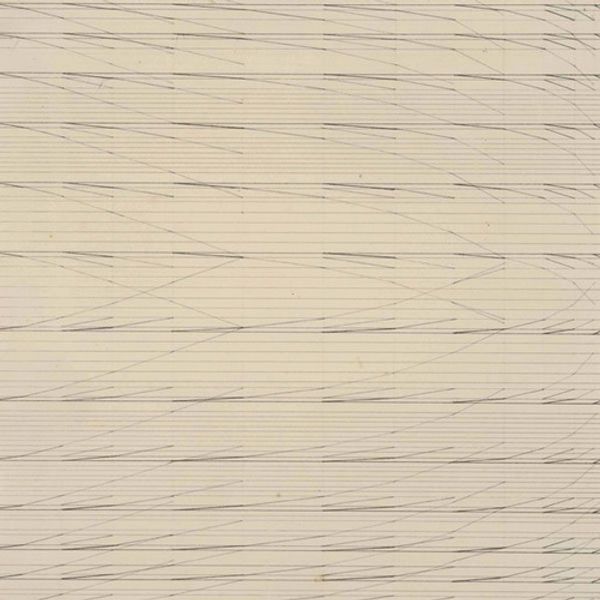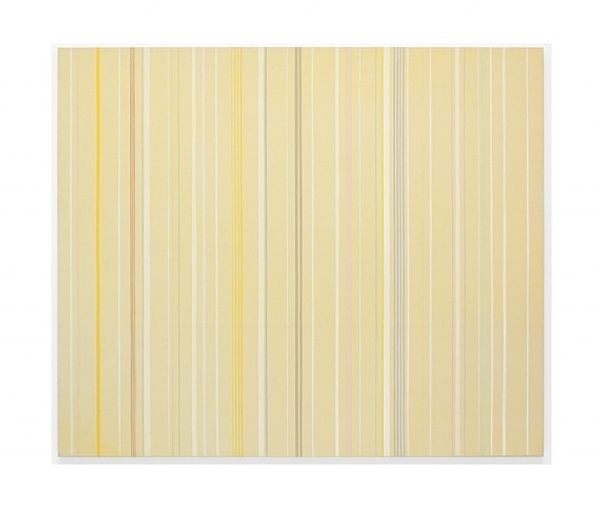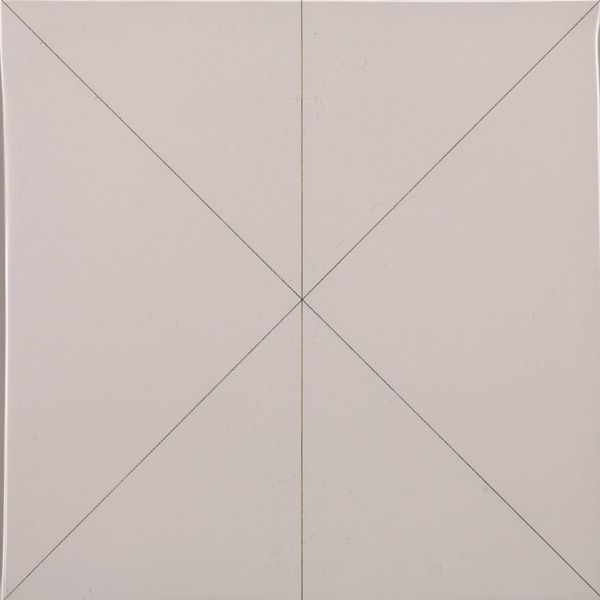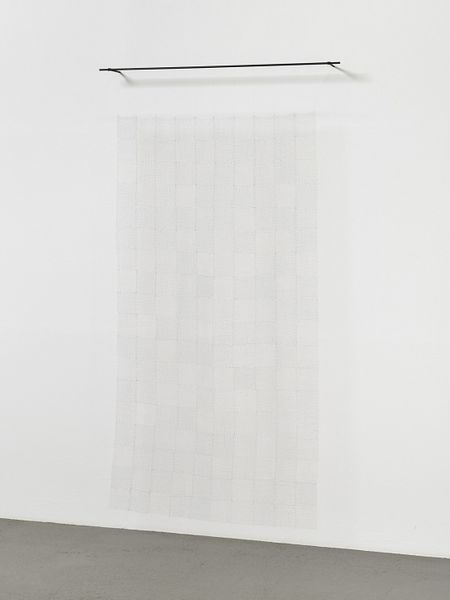
paper
#
abstract-expressionism
#
paper
#
tonal
#
line
#
monochrome
Copyright: Jean Degottex,Fair Use
Editor: This is “Pli x Pli III” by Jean Degottex, created on paper. I find it quite subtle; it’s almost like a whisper with its delicate lines and monochrome palette. What do you see in this piece, beyond just the geometric division? Curator: I see a powerful statement about constraint and freedom, deeply embedded in its historical context. Degottex was working in a post-war era grappling with existential questions. The monochrome, the rigid lines...it speaks to a world trying to rebuild, but also pushing against established norms. What do you make of the fact that the lines aren’t perfect, aren’t uniformly spaced? Editor: I guess that imperfections suggest an individual’s touch and intention. That pushes against industrial standardization and maybe something about individuality resisting systems? Curator: Precisely! Think about the cultural discourse at the time, the rise of existentialism, and feminist theory critiquing societal structures. These imperfect lines can be interpreted as a quiet act of rebellion against the perceived order. It's a dialogue between the artist's hand and the constraints they impose upon themselves. It’s about control, but it's also a radical opening, or fold-- “pli,” to evoke Deleuze. The canvas confronts silence to make room for another mode of existence. Editor: That's really fascinating. I hadn't considered the element of social critique. This really makes me think about what appears to be order can be undone. Curator: Exactly. Art often operates in this realm – challenging our preconceived notions and revealing hidden dimensions. It prompts us to engage more thoughtfully, and historically, with the issues of our time. Editor: I’ll never look at lines the same way again! Thank you for sharing that view.
Comments
No comments
Be the first to comment and join the conversation on the ultimate creative platform.
